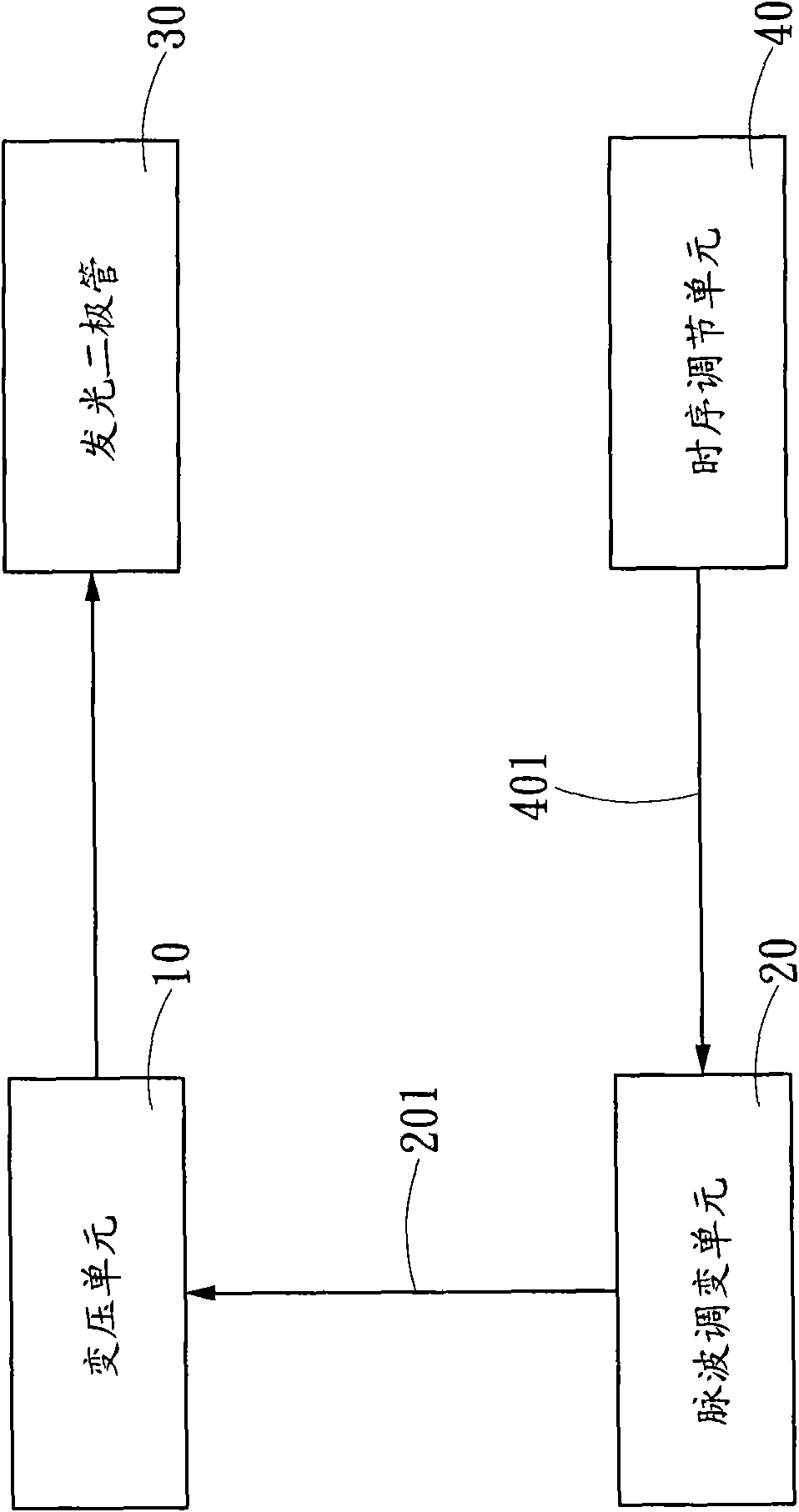Regulation circuit and regulation method for light-emitting diode
A technology of light-emitting diodes and regulating circuits, which is applied to the layout of electric lamp circuits, light sources, electric light sources, etc., can solve problems such as insufficient heat dissipation, thermal burnout of light-emitting diodes, and poor heat dissipation efficiency, so as to reduce continuous accumulation and facilitate manufacturing and assembly Effect
- Summary
- Abstract
- Description
- Claims
- Application Information
AI Technical Summary
Problems solved by technology
Method used
Image
Examples
Embodiment Construction
[0021] Relevant detailed description and technical content of the present invention, cooperate schematic diagram to illustrate as follows now:
[0022] see figure 1 As shown, it is a schematic circuit block diagram of a preferred embodiment of the present invention, as shown in the figure: the present invention is a light-emitting diode adjustment circuit, which has a transformer that obtains DC power and provides a constant current to drive at least one light-emitting diode 30 The unit 10 and a pulse modulation unit 20 generate a driving signal 201 to control the transforming unit 10 . The pulse modulation unit 20 is connected to a timing adjustment unit 40 for receiving an adjustment signal 401 generated by the timing adjustment unit 40 .
[0023] see figure 2 As shown, it is a schematic circuit block diagram of another embodiment of the present invention, as shown in the figure: the transformer unit 10 is electrically connected to a rectification and filtering circuit 5...
PUM
 Login to View More
Login to View More Abstract
Description
Claims
Application Information
 Login to View More
Login to View More - R&D
- Intellectual Property
- Life Sciences
- Materials
- Tech Scout
- Unparalleled Data Quality
- Higher Quality Content
- 60% Fewer Hallucinations
Browse by: Latest US Patents, China's latest patents, Technical Efficacy Thesaurus, Application Domain, Technology Topic, Popular Technical Reports.
© 2025 PatSnap. All rights reserved.Legal|Privacy policy|Modern Slavery Act Transparency Statement|Sitemap|About US| Contact US: help@patsnap.com



